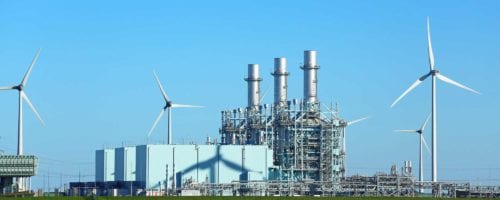
Report | 2019
The Growing Market for Clean Energy Portfolios
Over the past 20 years, the United States has expanded natural gas use dramatically for electricity generation. With persistent low gas prices, the industry continues to plan new gas infrastructure, including both new power plants and new pipelines.
But even as gas use has expanded, wind, solar, and energy storage technologies have improved and dropped precipitously in price. RMI research shows that “clean energy portfolios” (CEPs) comprised of these technologies are now cost-competitive with new natural gas power plants, while providing the same grid reliability services.
Figure 1: Historical and projected evolution of clean energy portfolio costs
Even as clean energy costs continue to fall, utilities and other investors have announced plans for over $70 billion in new gas-fired power plant construction through 2025. RMI research finds that 90% of this proposed capacity is more costly than equivalent CEPs and, if those plants are built anyway, they would be uneconomic to continue operating in 2035, well ahead of the ends of their planned economic lifetime. Continued investments in these power plants will present stranded cost risk for customers, shareholders, and society, while locking in 100 million tons of CO2 emissions each year.
Figure 2: Percentage of proposed combined-cycle gas plants facing stranded cost risks, 2020–2040
Motivated in part by the increase in natural gas use for electricity generation, the industry has announced plans to invest an additional $30 billion in new interstate pipelines through 2024. But as the economic case weakens for gas power plants, new pipelines that would deliver gas to power plants will see their utilization fall dramatically. As utilization of pipelines falls, the average cost of delivered gas will increase by 30%–140% from expected levels, imposing significant costs on customers and investors.
Figure 3: Likely cost increases for new gas pipelines due to competition from clean energy
RMI’s research highlights the implications of gas infrastructure investment in the context of falling clean energy costs, and the reports make recommendations for regulators, investors, and utilities to capture the opportunity at hand while avoiding the stranded cost risks of continued gas investment in the US power sector.